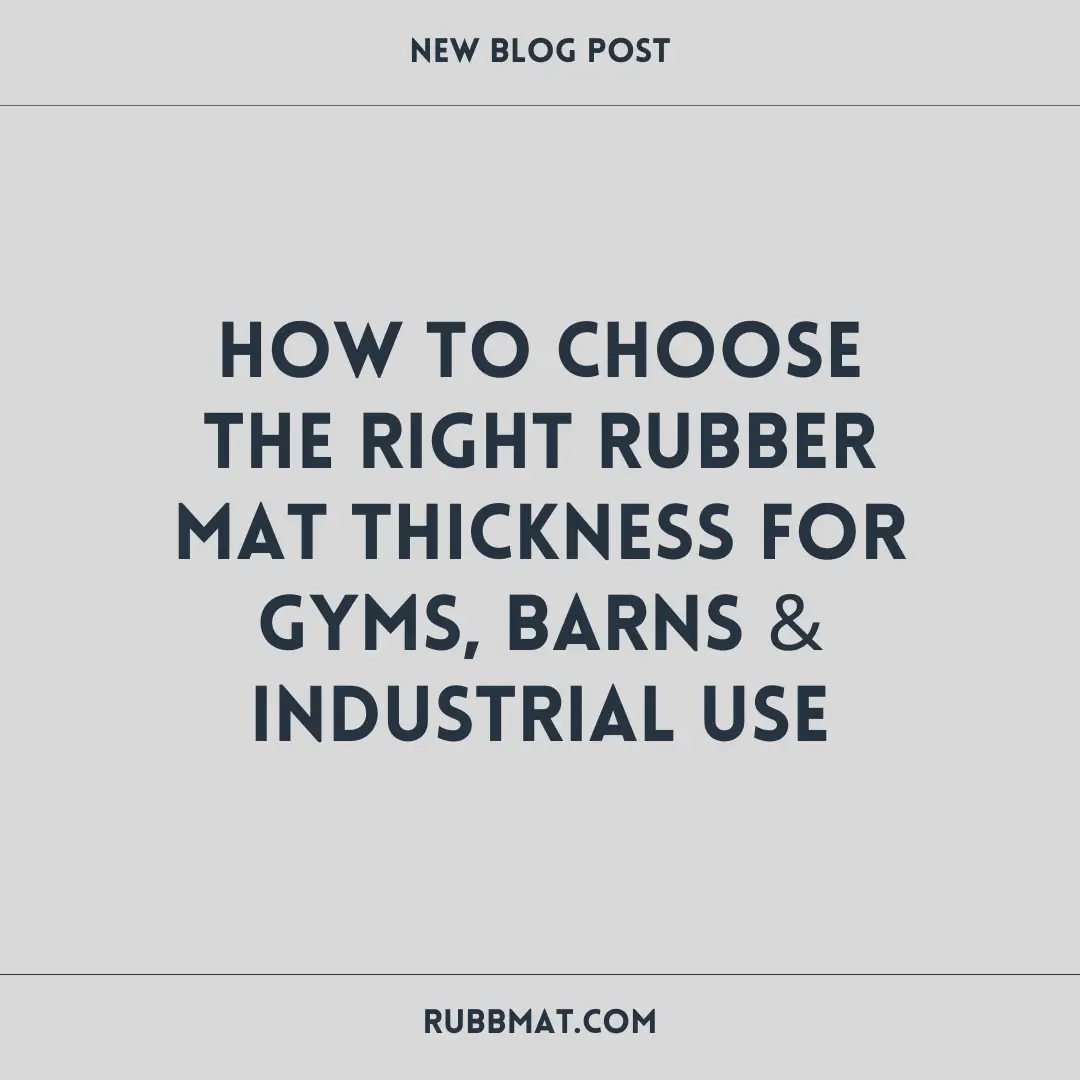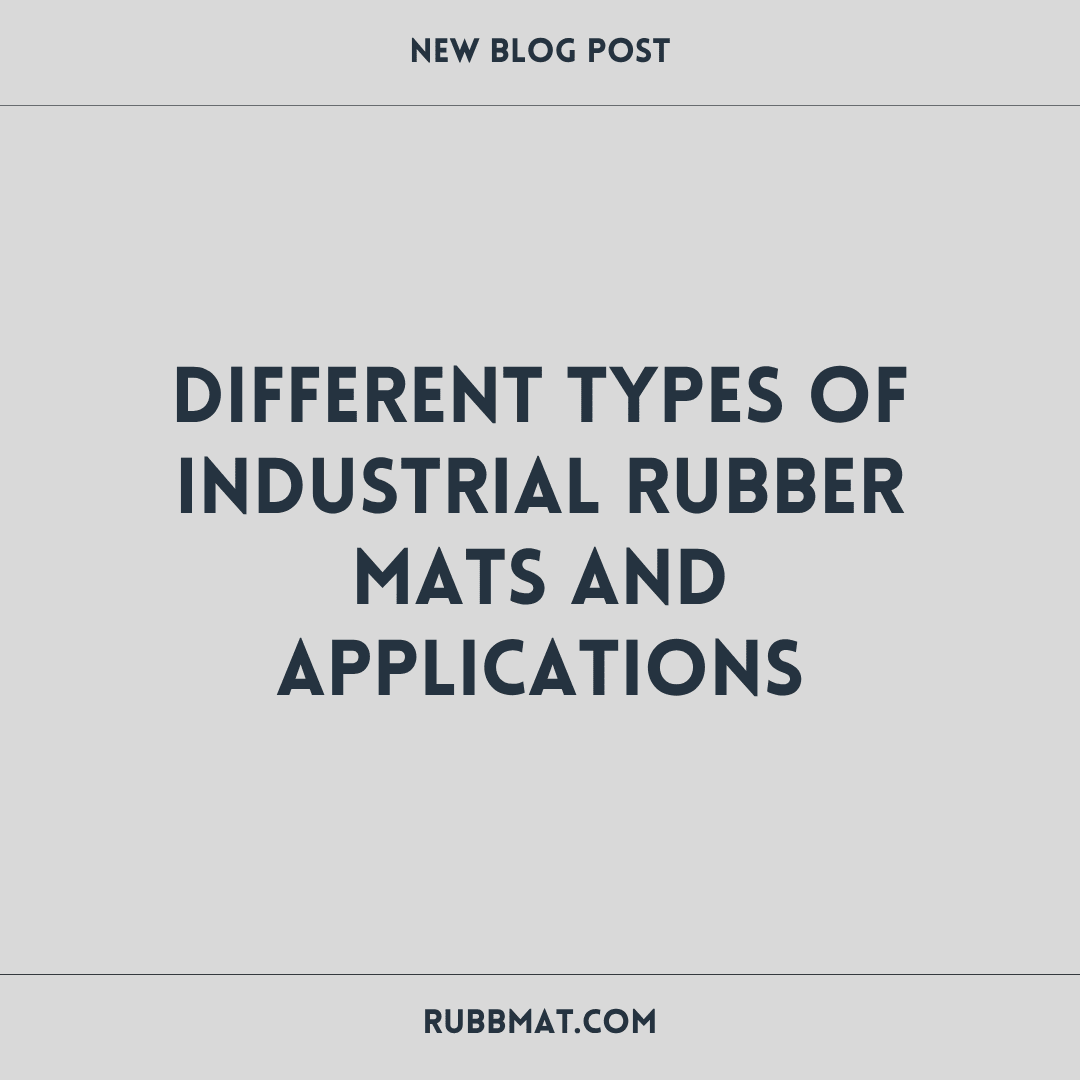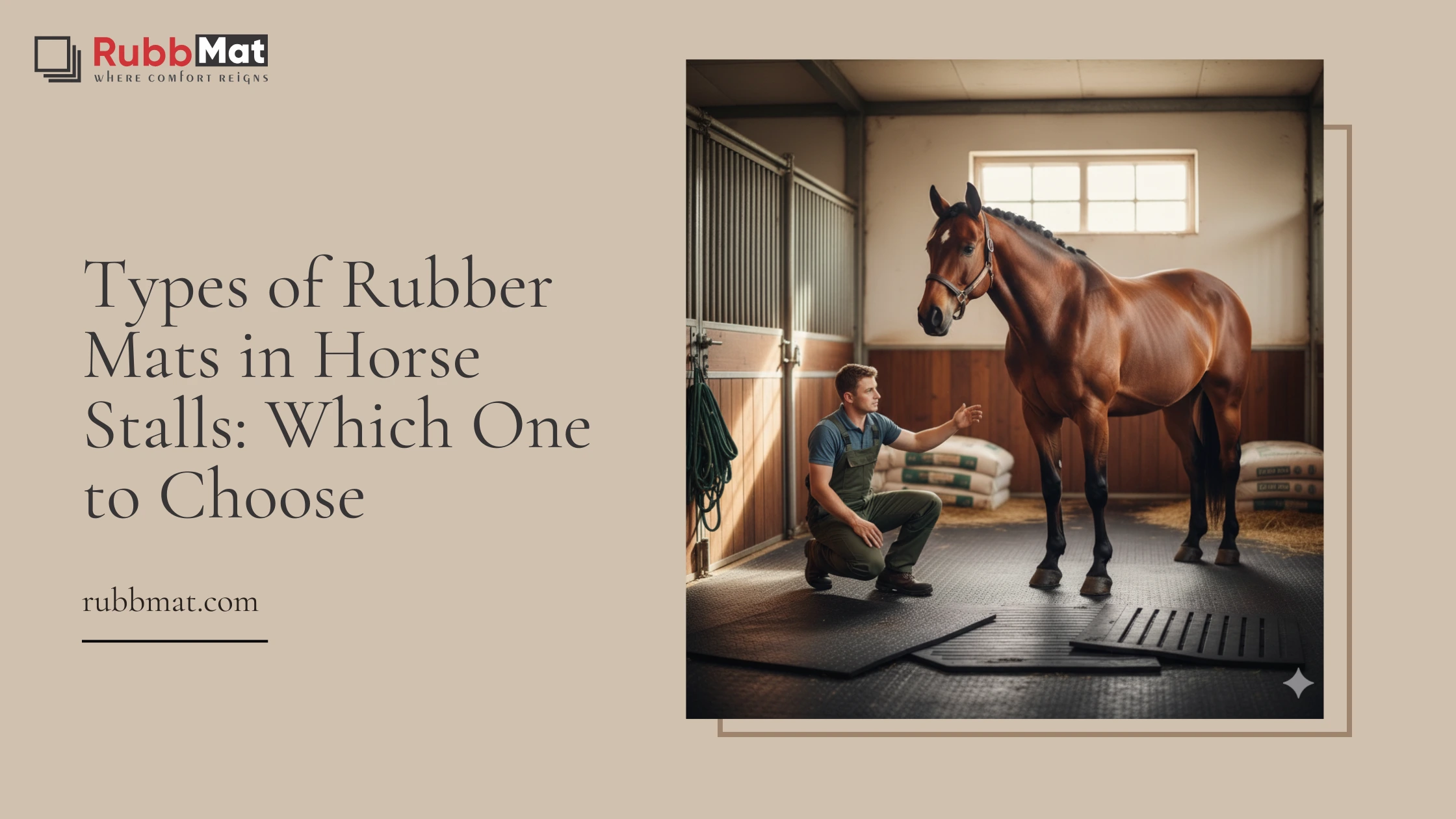
The dairy industry is always developing with new innovations developed to ensure the welfare and productivity levels of the animals involved. Among these numerous innovations is cow rubber matting, which brings comfort and hygiene advantages, thereby leading to better milk production. This article looks at how these mats have changed dairy farming, using scientific proof and facts.
1. Introduction to Cow Rubber Mats
1.1 The Role of Comfort in Dairy Farming
Dairy cows spend much time on their legs standing, walking, and lying down. Comfort is crucial to both the welfare and the productive ability of the cow. There are many reasons to bring comfortable cows to milk such as extra milk produced, fewer health problems, and longer productive life. The kind of flooring these cows stand and rest on is one of the most important elements affecting cow comfort.
1.2 Importance of Flooring in Dairy Cattle's Welfare
The floor would determine much of the physical health of dairy cows. Hard, unyielding surfaces will cause joint stress and hoof problems and may even invite infections. This may prevent a cow from moving freely, therefore decreasing the amount of milk produced. Soft resilient yet cushioned surfaces such as rubber mats offer a substitute for such issues by reducing joint strain and allowing better general health
2. Overview of Cow Rubber Mats
2.1 What Are Cow Rubber Mats?
Cow rubber matting is specifically designed for floor covering for dairy barns. The durable, high-density rubber construction of the mats feels soft like the natural ground, yet they are comfortable and slip-resistant. The mats have been engineered to be capable of bearing the weight of cattle while holding shock absorption to make their legs and joints feel easier on themselves.
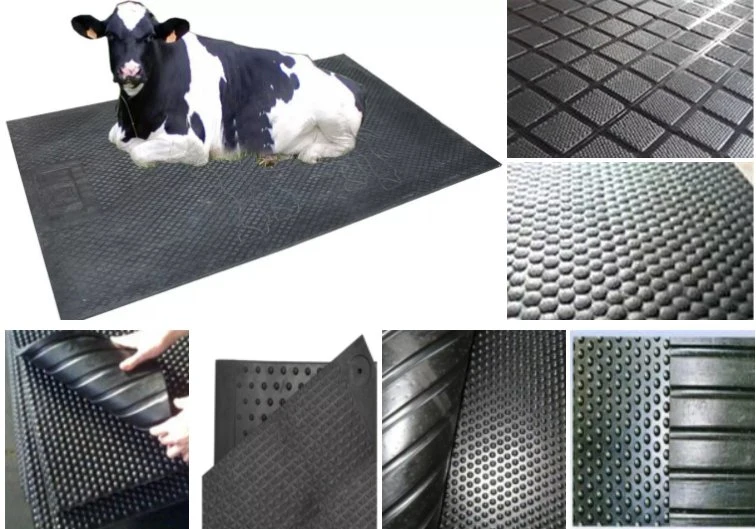
2.2 Common Types of Cow Rubber Mats
There are plenty of cow rubber mats available, and most of them are designed to fulfill various requirements:
-
Flat Mats: They provide a flat plane and are excellent for lying regions.
-
Textured Mats: They provide better traction, meaning one will not experience too much slippage in very busy stations.
-
Interlocking Mats: these are very similar to puzzle pieces, interlocking to make a flat surface, stable and seamless.
-
Standalone Mats: These are mats placed in particular areas to target comfort for an individual.
3. The Science Behind Rubber Mats and Milk Production
3.1 How Cow Comfort Affects Milk Yield
A comfortable cow is also a productive one. The findings from researches on soft cushioned surfaces provided evidence that cows are more likely to lie down for longer periods of time. Increased lying times are positively correlated with improved rumination or better cud chewing. This results in better digestion and increased milk production. Rubber mats help create an environment where cows feel more comfortable resting.
3.2 Studies and Data Linking Rubber Mats to Higher Milk Production
In fact, studies have proved the positive effect of rubber mats on milk production. Research conducted by the University of British Columbia deduced cows housed on rubber mats produced more milk than those housed on concrete floors. In addition to these mats improving physical wellbeing, research showed it also reduced stress, resulting in overall better productivity
4. Benefits of Using Rubber Mats in Dairy Farms
4.1 Enhanced Comfort and Resting Time
The lying time on rubber mats encourages cows to lie down more frequently and for more extended periods. Time spent resting is crucial for the health of legs and hooves and for promoting better blood circulation that is essential for milk production.
4.2 Reduced Stress on Joints and Hooves
Most cows often experience stress on their joint and diseases in their hooves because of constant walking and standing on solid surfaces such as concrete. The rubber mats reduce the impact, therefore reducing wear and tear on the joints and hooves; this not only will improve the health and well-being of the cows but also reduce veterinary visits and healthcare costs.
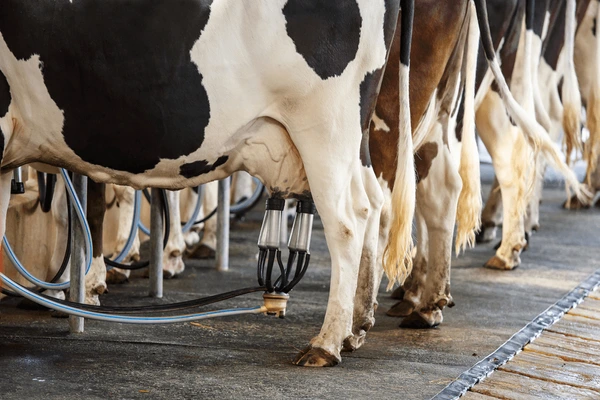
4.3 Improved Hygiene and Reduced Infections
Apart from comfort, the rubber mats also ensure that the sanitary conditions of the barn are improved. Rubber mats can be cleaned and disinfected easily compared to conventional bedding products such as straw or sand. This minimizes infection cases, especially on the udder and hooves. Cleanliness keeps mastitis away. Mastitis is one of the common problems facing dairy cows. Mastitis is likely to increase the cases of low milk production if it occurs in a cow.
5. Types of Rubber Mats and Their Specific Uses
5.1 Flat Mats vs. Textured Mats
Flat rubber mats are mainly used in cow lie-down places, giving a smooth surface on which the cow can lie down. Textured mats are for a high-traffic area and provide grip to prevent slippage. Both of these contribute towards providing cows' overall comfort and safety.
5.2 Interlocking Mats vs. Standalone Mats
Interlocking rubber mats are useful for creating a seamless, continuous surface over vast areas; standalone mats are also good at specific zones, such as milking parlors or resting spaces. A decision between the two, therefore, strictly depends on the house barn and the particular requirements of a farm.
6. Impact on Milk Production
6.1 Comfort-Related Milk Yield Improvements
The more comfortable the cows, the more likelihood that they will continue milking at the same rate over time. Rubber mats reduce stress and discomfort that would otherwise result in a spurt in milk yield by providing a soft, grippy surface. Overall, for the whole lactation period, cows housed on rubber mats will have produced more milk than those housed on harder surfaces.
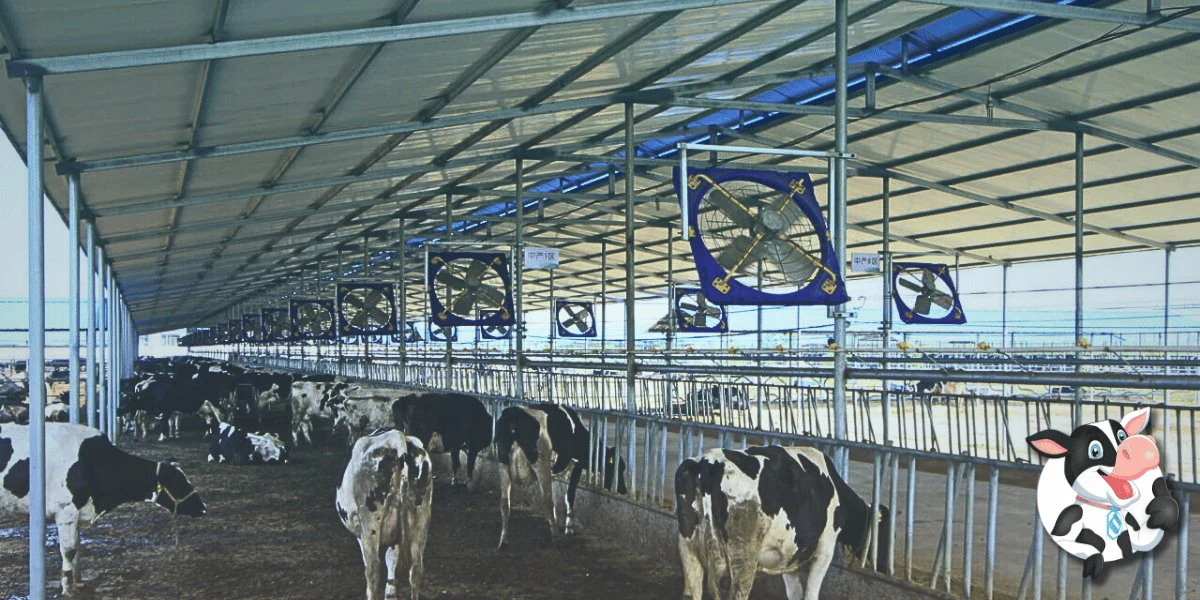
6.2 Prevention of Mastitis and Hoof Infections for Better Production
Mastitis, or inflammation of the udder, is also an important issue in dairy farming, due to its direct influence on milk quality and production. Rubber mats will decrease mastitis incidence since this better hygiene will decrease infections. Moreover, fewer infections will mean more movement by cows and more time feeding and producing milk naturally.
7. Scientific Evidence Supporting Rubber Mat Use
7.1 Studies by Agricultural Universities
Many agricultural universities have done research on the benefits of rubber mats for dairy farming. From the studies done, all show that cows on rubber mats have a lower incidence of lameness, thus producing higher volumes of milk. For example, a study at the University of Wisconsin reported massive reductions in hoof injuries and subsequent mobility improvements with higher milk production in cows using the rubber mats.
7.2 Veterinary Reports and Case Studies
Veterinarians also reported a good return when rubber mats were used in dairy barns, including case studies on farms that made the change over from concrete to rubber flooring and showed improvement in the health and productivity of the cows.
7.3 Dairy Farm Data on Rubber Mats and Yield Improvements
Rubber mats advantages at dairy farms have improved the yield of milk. The rate of diseases as well as injuries is lower, and hence higher profits are realized owing to a reduction in veterinary costs coupled with increased milk production.
8. Economic Benefits of Rubber Mats
8.1 Long-Term Cost Savings from Reduced Medical Bills
Although expensive in the short term, purchasing rubber mats will prove to be inexpensive as regards veterinary costs and cost of treatment in the long run. The healthier the cows are, the fewer the occurrences of injuries and infections, which means that dairy farmers will save money on a productive herd.
8.2 Increased Productivity Leading to Higher Profit
Welfare of Cows The comfort and easier cleanness for cows enhance their health status. As a result, cows will give more milk to achieve a larger total output of the farm. This results in direct gains from increased milk yield per cow to dairy farms using rubber mats.
Rubbmat: A Leader in Animal Rubber Mats
Choosing a Good Supplier While shopping for cow rubber mats, you need to acquire from a reliable supplier. Rubbmat is a prominent manufacturer and exporter of different types of animal rubber mats with specific dairy cow options. Their mats are made from quality material that is expected to offer durability, comfort, and hygiene. Innovating excellence, Rubbmat works with the solutions for current challenges of modern dairy farming, focusing on increasing the productivity of farmers while keeping into consideration their satisfaction in raising their animals.
Conclusion
Conclusion In summary, the addition of cow rubber mats is an essential move for dairy farming towards better animal welfare and higher productivity. Summarized in the scientific studies above, these rubber mats improved the comfort and hygiene of cows while bringing down their stress levels, hence enhancing their milk production. The proof is found in research into agriculture, as well as in the reality of the dairy farm, but cow comfort is positively associated with the yield of milk, further enforcing the need for quality flooring solutions
